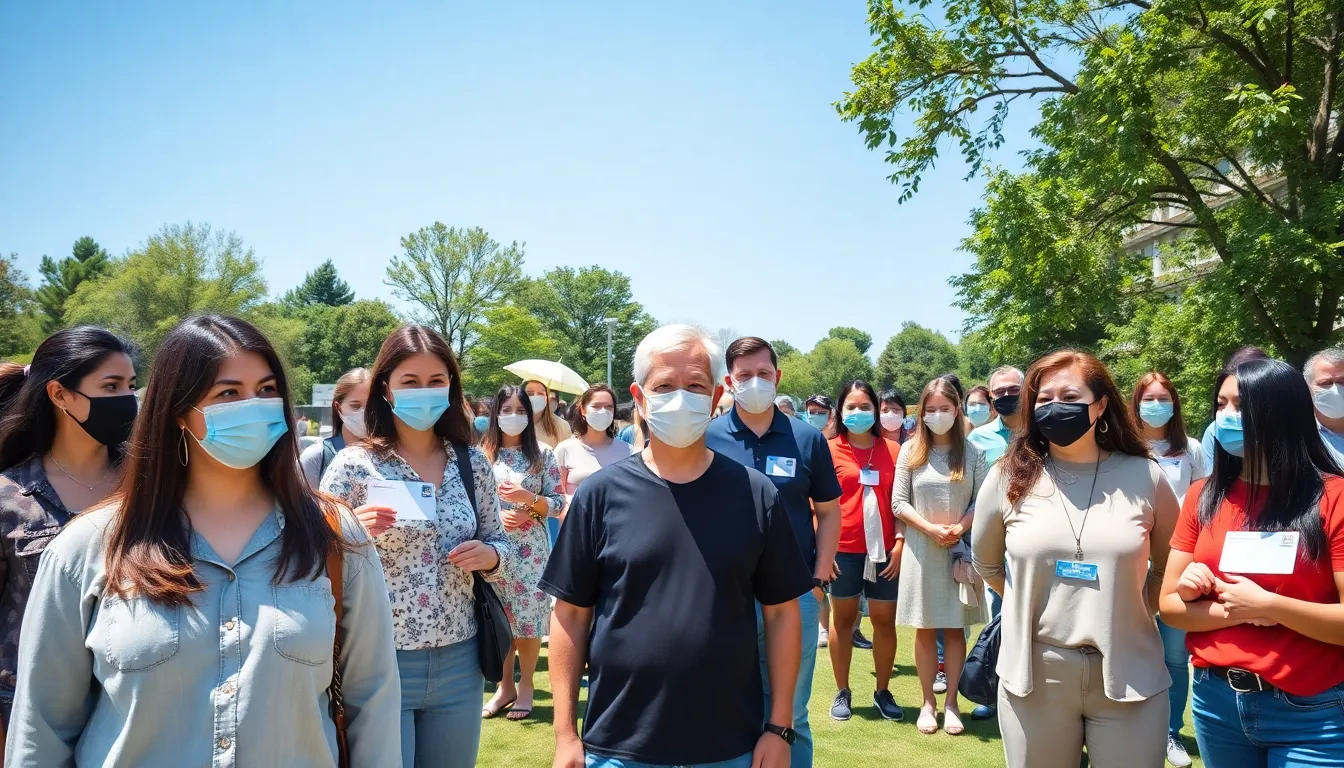As the world continues to navigate the twists and turns of the COVID-19 pandemic, keeping up with the latest protocols can feel like trying to follow a plot twist in a soap opera. Just when you think you’ve got it all figured out, new guidelines pop up like surprise guest stars. But don’t worry—staying informed doesn’t have to be a chore.
In this article, readers will uncover the current COVID protocols that are shaping everyday life. From mask mandates to vaccination updates, it’s all about making sense of the ever-changing landscape. So grab a cup of coffee, sit back, and let’s dive into the essentials that’ll keep everyone safe and sound while navigating this wild ride together.
Table of Contents
ToggleOverview of Covid Protocols
Covid protocols currently vary by location but generally include vaccination, mask usage, and social distancing practices. Most health organizations emphasize the importance of getting vaccinated to curb the spread of the virus. Vaccination rates rose significantly in 2023, with over 80% of the population receiving at least one dose as of October 2023.
Masks are recommended in crowded indoor spaces, especially in areas with high transmission rates. The CDC suggests wearing masks that provide better filtration, such as N95 or KN95 masks, for enhanced protection. Alongside this, hand hygiene remains crucial. Regular handwashing with soap or using alcohol-based sanitizer can significantly reduce the risk of virus transmission.
Social distancing measures still apply in various settings. Maintaining at least six feet of distance from others, particularly in crowded environments, minimizes the risk of exposure. Events with large gatherings might require proof of vaccination or negative test results before entry.
Travel guidelines also adjust frequently. Many airlines and travel agencies now require proof of vaccination or a negative COVID-19 test result for both domestic and international flights. Quarantine protocols may differ depending on the destination and travelers’ vaccination status.
Public health messaging continuously updates in response to new variants and emerging data. They encourage individuals to stay informed through legitimate sources like the CDC or WHO. Knowledge of local guidelines is essential in ensuring adherence to evolving protocols.
Current Covid Protocols in the U.S.

COVID-19 protocols continue to adapt as health experts assess the pandemic’s dynamics. Attention remains on vaccination, mask mandates, and social distancing guidelines.
Vaccination Requirements
Vaccination significantly influences current protocols. As of October 2023, over 80% of the U.S. population has received at least one vaccine dose. Certain venues and employers mandate proof of vaccination for entry. Additionally, individuals seeking to travel may need a negative COVID-19 test or vaccination documentation. The CDC recommends staying updated on vaccination options, including boosters, to maintain optimal health.
Mask Mandates
Mask mandates vary depending on location and transmission rates. In areas of high transmission, the CDC recommends wearing masks indoors, especially in crowded settings. N95 or KN95 masks provide enhanced protection compared to cloth masks. Some states enforce stricter mask requirements, particularly for public transportation and healthcare settings. Staying informed about local regulations ensures compliance and safety for everyone.
Social Distancing Guidelines
Maintaining social distance remains vital in public spaces. Current guidelines recommend keeping at least six feet of distance from others to reduce transmission risk. Gatherings may have limits on participant numbers based on local authority updates. Events held indoors typically require adherence to distancing measures, and outdoor gatherings often encourage spacing for safety. Compliance with these guidelines promotes a safer environment for all.
International Covid Protocols
COVID-19 protocols continue to vary significantly across countries. Adapting to local guidelines is essential for travelers and residents alike.
Country-Specific Guidelines
In many regions, vaccination status influences access to services and venues. For instance, some European countries require proof of vaccination for entry into restaurants or public events. Many Asian nations enforce stringent testing and quarantine protocols for international arrivals, while others have relaxed restrictions, reflecting a focus on living with the virus. Compliance with health protocols remains crucial, especially in places with high transmission rates. Local authorities often publish updated guidelines, so checking those regularly can inform individuals about specific requirements.
Travel Restrictions
Travel restrictions frequently evolve in response to the changing pandemic landscape. Numerous countries maintain various entry requirements, including vaccination proof or negative COVID-19 tests conducted within a set timeframe. For example, several airlines only allow vaccinated passengers to board international flights. Quarantine measures may apply based on origin, with certain locations necessitating isolation upon arrival. Staying informed through reliable platforms, such as government websites or health organizations, helps travelers navigate these complex regulations efficiently.
Changes Over Time
COVID-19 protocols have evolved significantly since the pandemic began, reflecting emerging data and varying global situations. Initial strategies focused on basic health measures, which have become more sophisticated and tailored.
Initial Protocols vs. Current Protocols
Initially, COVID-19 guidelines emphasized basic hand washing, social distancing, and universal masking. These measures applied universally without consideration for vaccination status. Current protocols prioritize vaccination, with over 80% of the U.S. population having received at least one vaccine dose by October 2023. Many venues require proof of vaccination for entry, marking a shift towards a more nuanced approach. Mask recommendations now emphasize N95 or KN95 usage in high transmission areas, reflecting a more focused understanding of viral transmission. Compliance with these adaptive strategies ensures better protection and safety for individuals in shared spaces.
Impact of Variants on Protocols
The emergence of new variants significantly influences COVID-19 protocols. Variants such as Delta and Omicron prompted changes in mask recommendations and social distancing measures. Health organizations adjust guidelines based on variant transmissibility and severity. For example, increased transmissibility of variants led to renewed mask mandates in crowded indoor settings. Travelers must navigate evolving testing requirements and vaccination documentation as variants emerged. Continuous surveillance of these variants informs changes, emphasizing the necessity of staying informed. As conditions change, adhering to updated recommendations improves community health.
Navigating the current landscape of COVID-19 protocols requires vigilance and adaptability. As guidelines shift based on emerging data and local circumstances, individuals must prioritize staying informed. Vaccination remains a cornerstone of public health efforts, while mask usage and social distancing continue to play vital roles in mitigating transmission.
Travelers should be particularly aware of varying requirements, as international protocols differ widely. By keeping up with reliable sources like the CDC and WHO, everyone can make informed decisions that enhance their safety and the safety of others. Adhering to these evolving guidelines not only protects individual health but also contributes to the broader effort of managing the pandemic effectively.








